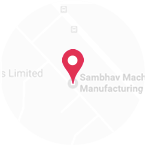Metals and alloys recycling is more than a US$ 23 billion industry annually (More than 50 Million Metric Tonnes Annually).
The challenges associated with producing metals and alloys are reducing porosities in macrostructure due to dissolved gases precipitation during casting through degassing processes. Porosities in macrostructure generate detrimental effects on metallurgical, mechanical, thermal and electrical properties of metals and alloys castings and removing impurities like: Ca, Mg salts and other elements of the earth as inclusions from the molten metals and alloys.
Two types of degassing methods are currently in use. One of these, vacuum degassing, is used primarily in the ferrous metals and alloys industry and thus not generally used in the nonferrous metals and alloys industry. The second method, generally employed in the nonferrous metals and alloys industry, is rotary degassing. Both methods use argon, nitrogen, chlorine, and fluorine to remove various dissolved gases, salts and impurities inclusions.



